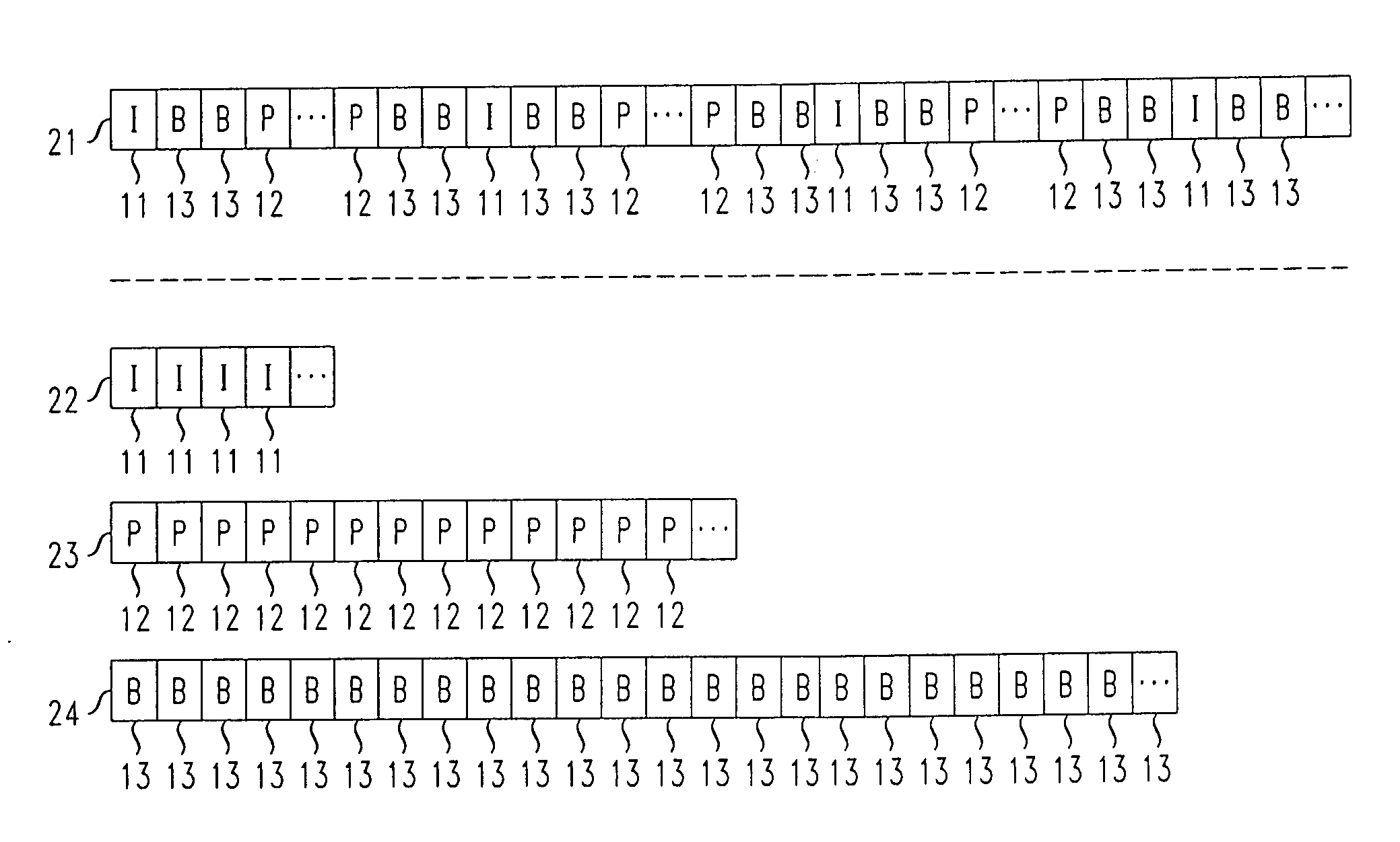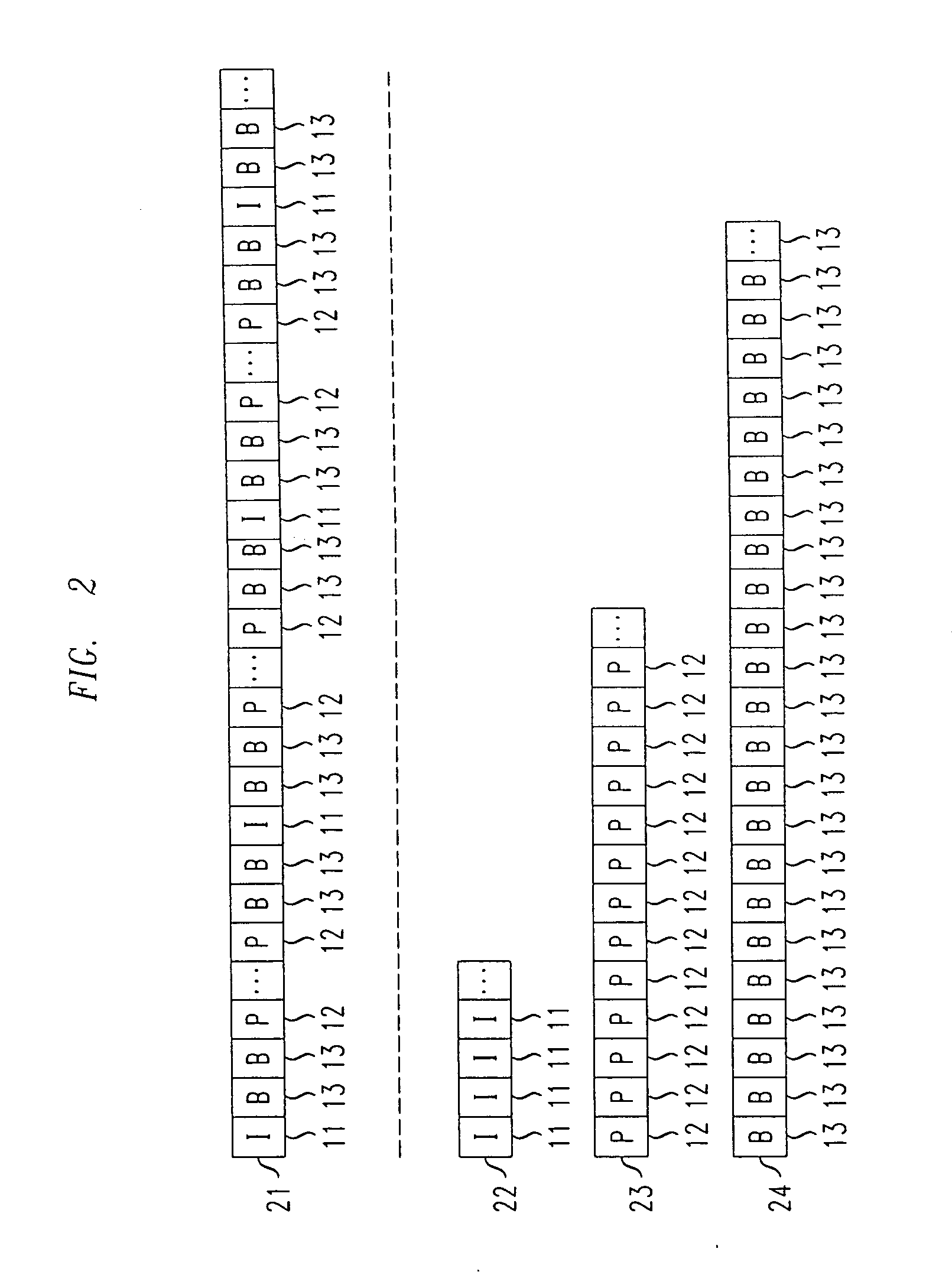Method and apparatus for performing MPEG video streaming over bandwidth constrained networks
a bandwidth-constrained network and video streaming technology, applied in the field of video encoding and transmission of encoded video signals, can solve the problems of network bottlenecks and insufficient quality for users receiving video, and achieve the effect of increasing the minimum reserved bandwidth
- Summary
- Abstract
- Description
- Claims
- Application Information
AI Technical Summary
Benefits of technology
Problems solved by technology
Method used
Image
Examples
Embodiment Construction
[0016]FIG. 1 shows an example of how a video signal may be advantageously encoded using a Motion Pictures Expert Group (MPEG) encoding technique for use with an illustrative embodiment of the present invention. MPEG encoding techniques are conventional and fully familiar to those of ordinary skill in the art. As is well known, a video signal comprises a sequence of frames, each of which comprises a (still) image, such that the sequence of images when displayed in real time produces the resultant video. In conventional video encoding techniques, each of these frames is encoded so as to reduce the quantity of data that must be used to represent it and thus, for example, to reduce the quantity of data which must be transmitted across a communications network.
[0017]In MPEG encoded video, there are typically three encoding formats which are advantageously employed to encode the frames of the video signal. These three formats comprise Intra-coded frames (I-frames), which encode the given ...
PUM
 Login to View More
Login to View More Abstract
Description
Claims
Application Information
 Login to View More
Login to View More - R&D
- Intellectual Property
- Life Sciences
- Materials
- Tech Scout
- Unparalleled Data Quality
- Higher Quality Content
- 60% Fewer Hallucinations
Browse by: Latest US Patents, China's latest patents, Technical Efficacy Thesaurus, Application Domain, Technology Topic, Popular Technical Reports.
© 2025 PatSnap. All rights reserved.Legal|Privacy policy|Modern Slavery Act Transparency Statement|Sitemap|About US| Contact US: help@patsnap.com



